In Addis Ababa, the capital of Ethiopia, the office of Biruk Kebede, Executive Director of the East Africa Regional Office of the International Organization for Bamboo and Rattan, is filled with the fragrance of bamboo. The morning light shines through the bamboo curtains and falls on the desk with bamboo pen holders; In Ashanti Province, Ghana, bamboo craftsman George Sarpong and his apprentices are busy among the bamboo groves, transporting high-quality bamboo back to their studios; In the entrepreneurship workshop in Rwanda, local youth Jean Nyongkoru meticulously polished his carving techniques, thinking about how to improve bamboo products and explore broader markets.
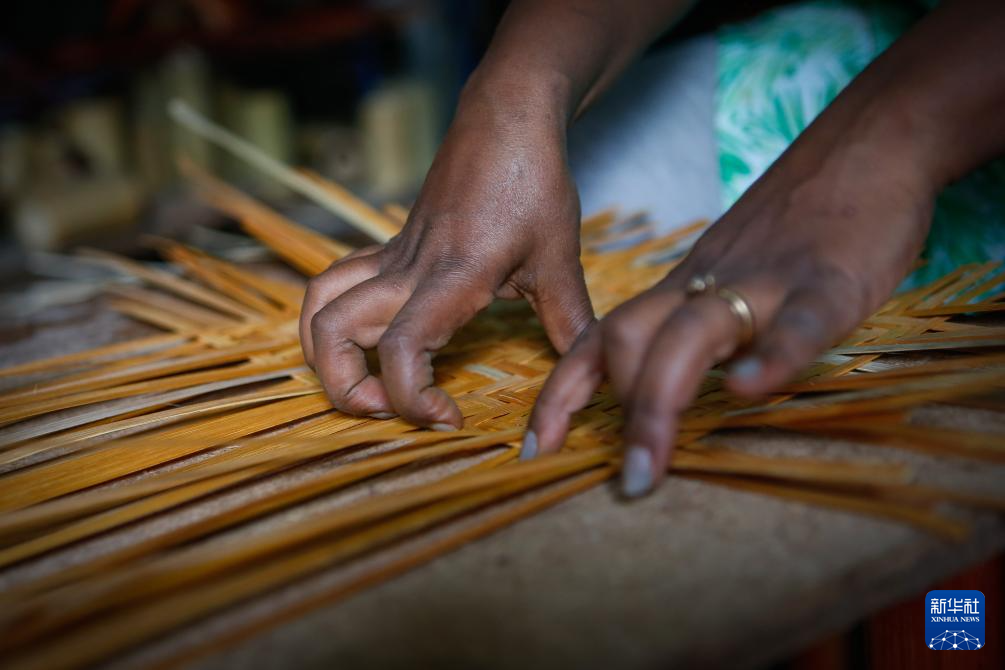 On August 10th, Fikirt Gabre was processing bamboo products at a bamboo and rattan studio called “Green Gold” in Addis Ababa, the capital of Ethiopia. Xinhua News Agency (photo by Michael Twelde)
On August 10th, Fikirt Gabre was processing bamboo products at a bamboo and rattan studio called “Green Gold” in Addis Ababa, the capital of Ethiopia. Xinhua News Agency (photo by Michael Twelde)
With the strong promotion of both China and Africa, Chinese bamboo and rattan varieties and technologies have taken root in Africa, and the scale of practitioners such as growers, artisans, and researchers continues to expand. The bamboo industry is growing vigorously on the African land, and bamboo is increasingly becoming the “green gold” in the eyes of local people seeking poverty alleviation and sustainable development. At present, the Central African Bamboo Center has been located in Ethiopia, and the construction work is proceeding in an orderly manner.
Green mountains and clear waters are as valuable as mountains of gold and silver
The International Bamboo and Vine Organization is committed to the sustainable development of bamboo and rattan. Founded in 1997, it is the first intergovernmental international organization headquartered in China.
Since the new era, China has vigorously promoted the construction of ecological civilization and actively practiced the development concept of harmonious coexistence between humans and nature. The phrase ‘green mountains and clear waters are as valuable as mountains of gold and silver’ has been translated by locals as’ green is gold ‘, which has resonated widely on the African continent.
Ghanaian bamboo craftsman Sarpon strongly agrees with this concept: “For me, it is necessary to use every piece of bamboo reasonably, while generating income and protecting nature
In Ghana, bamboo is known as the ‘wood of the wise’. Influenced by Ghana’s traditional bamboo art culture, Sarpong began creating bamboo art more than 20 years ago, and his studio is filled with various bamboo crafts. In 2016, through the International Bamboo and Vine Organization, he and his Ghanaian colleagues went to China for training. They not only witnessed the superb skills of Chinese bamboo masters, but also learned about the practical experience of using bamboo resources to lift people out of poverty and become prosperous in rural China.
The trip to China has opened my eyes and made me love my job even more. Now, Sarpong serves as the chairman of the Ghana National Bamboo and Vine Craftsmen Association. I hope to learn from the experience of China’s bamboo and rattan industry and promote the accelerated development of bamboo and rattan in Ghana
Flavia Munaba, the President of the Uganda Bamboo Association, served as the Minister of State for Environmental Affairs in Uganda and has been particularly concerned about the issue of excessive deforestation in Africa since then. Her multiple experiences in China have made her pay more attention to the important value of bamboo as a substitute for forest wood. She also actively promotes cooperation between Uganda and China in environmental protection and climate change.
China’s active promotion of the concept and actions of green development is very enlightening for the development of Africa, “she told reporters.” I am very pleased to see that Ukraine and China have launched environmental protection cooperation, and I believe this will effectively promote the further development of Uganda’s bamboo industry
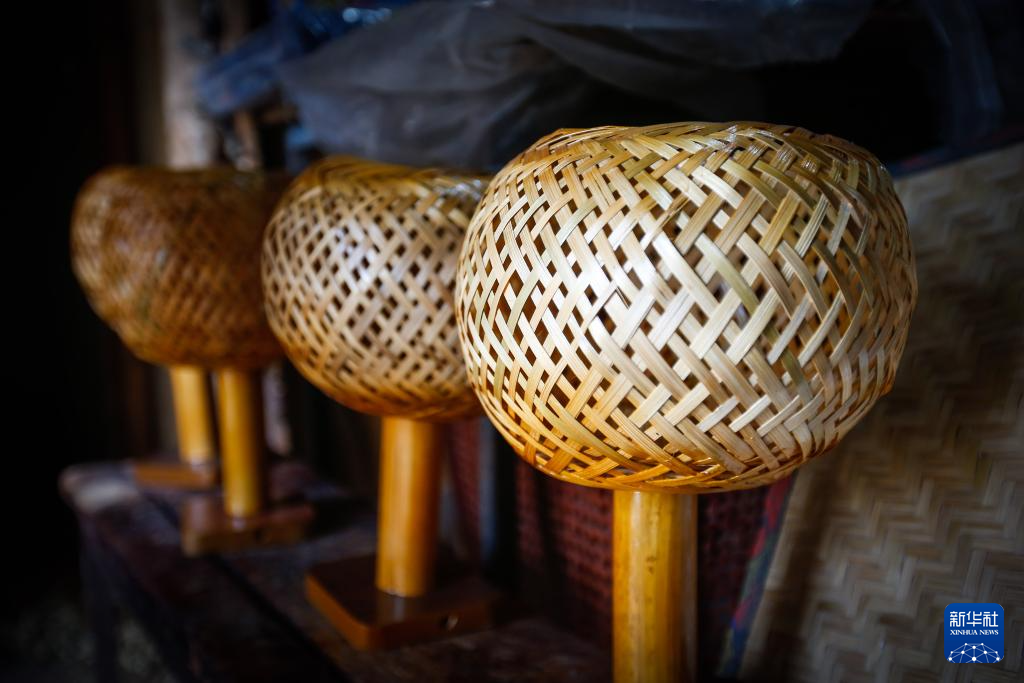 This is a bamboo product taken on August 10th at the bamboo and rattan studio called “Green Gold” in Addis Ababa, the capital of Ethiopia. Xinhua News Agency (photo by Michael Twelde)
This is a bamboo product taken on August 10th at the bamboo and rattan studio called “Green Gold” in Addis Ababa, the capital of Ethiopia. Xinhua News Agency (photo by Michael Twelde)
Green gold brings opportunities for poverty reduction
Six years ago, Ethiopian woman Fekirt Gabre had no special skills and no fixed source of income. The local government has opened a bamboo weaving craft training course, which has brought a turning point to her life. After training, she not only learned basic bamboo weaving skills, but also received an invitation from the International Bamboo and Vine Organization to participate in a two month bamboo processing training in China.
Today, Gabriel and several sisters jointly run a bamboo and rattan studio called “Green Gold” in Addis Ababa. Under their diligent hands, bamboo transforms into hats, baskets, pen holders, and decorations, bringing considerable income.
In recent years, we have also trained over 130 local people, mainly unemployed youth, women, and people with disabilities. Most of them now make a living through bamboo processing. Gabrei’s team has also been invited by the International Bamboo and Vine Organization to Kenya and Uganda to share their experience.
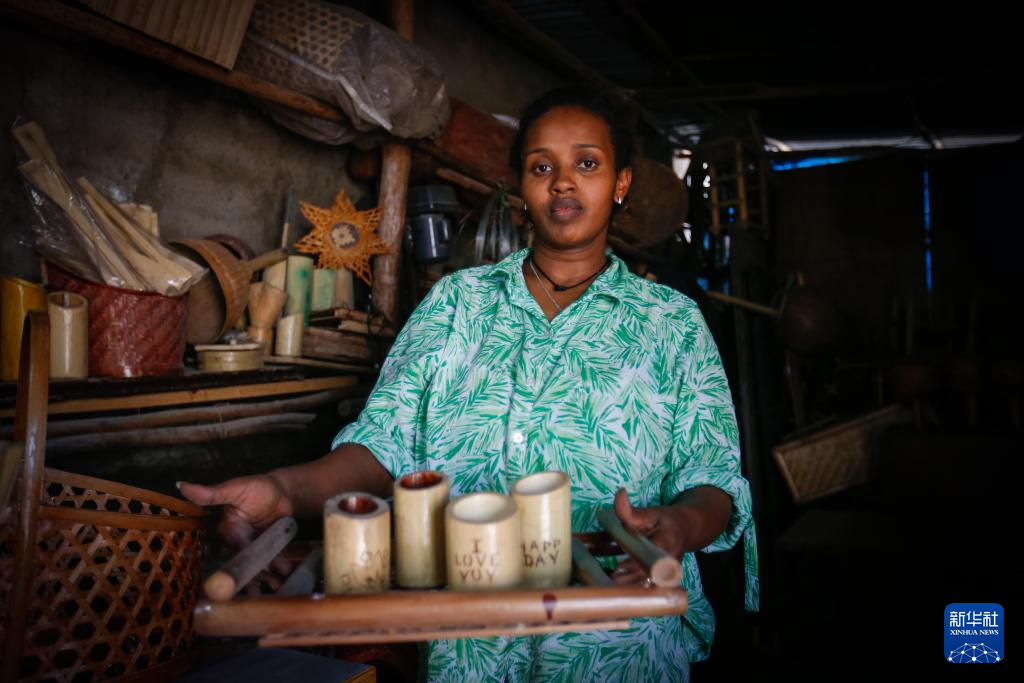 On August 10th, Fikirt Gabre showcased bamboo products at a bamboo and rattan studio called “Green Gold” in Addis Ababa, the capital of Ethiopia. Xinhua News Agency (photo by Michael Twelde)
On August 10th, Fikirt Gabre showcased bamboo products at a bamboo and rattan studio called “Green Gold” in Addis Ababa, the capital of Ethiopia. Xinhua News Agency (photo by Michael Twelde)
China is the country with the richest bamboo resources in the world, and also the earliest country to develop and use bamboo. Under the promotion of the International Bamboo and Vine Organization, a large number of practitioners in the African bamboo and rattan industry have been invited to China for training. China has also dispatched experts to Africa to teach bamboo planting and processing techniques. Kebede has visited China three times in the past 15 years. He said that with the cooperation and promotion between China and the International Bamboo and Vine Organization, thousands of people in East Africa have participated in bamboo industry training activities, and about 15 pilot projects for bamboo development are being promoted.
Professor Shi Yongjun from Zhejiang Agriculture and Forestry University once went deep into the mountainous areas of Ethiopia with colleagues to carry out training on the development and practical techniques of bamboo forest carbon sequestration projects. Bamboo forests are distributed in high-altitude areas of over 4200 meters, with foggy and oxygen deficient conditions, as well as the presence of insects, snakes, and wild animals. The conditions are harsh. The arrival of the Chinese expert team has brought great joy to the local people.
Many people spontaneously came to help, participated in the investigation with us, and even brought us water and food. These moments are unforgettable for Shi Yongjun to this day.
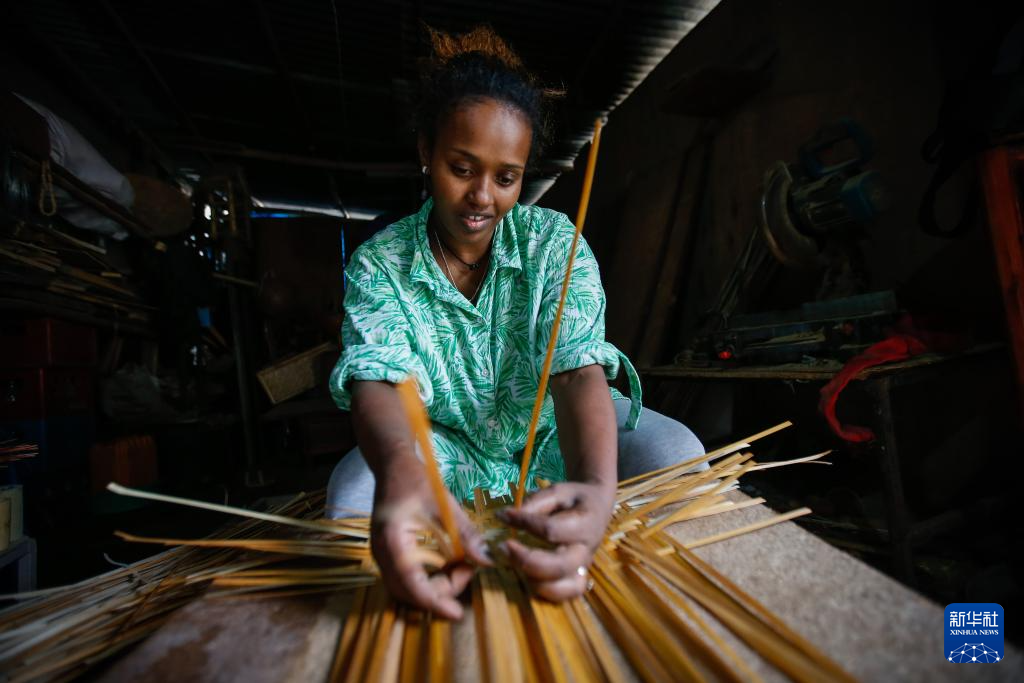 On August 10th, Fikirt Gabre was processing bamboo products at a bamboo and rattan studio called “Green Gold” in Addis Ababa, the capital of Ethiopia. Xinhua News Agency (photo by Michael Twelde)
On August 10th, Fikirt Gabre was processing bamboo products at a bamboo and rattan studio called “Green Gold” in Addis Ababa, the capital of Ethiopia. Xinhua News Agency (photo by Michael Twelde)
Spread to a wider land
I have a dream: to establish a ‘one-stop’ bamboo and rattan center for people to learn about bamboo knowledge, learn bamboo planting, research and develop bamboo related products, and collect literature and materials about bamboo. “Ugandan Abi Steve Tusimi has opened a bamboo company and is confident in the future development of the bamboo industry on the African continent.
Tu Ximei has been obsessed with bamboo since childhood, and whenever she travels, she wants to bring a local bamboo seedling home. In 2018, he flew to Beijing out of his own pocket to attend the first World Bamboo and Vine Congress and returned with a full load. Using the seeds and technology brought back from Beijing, he founded a company, built nurseries, cultivated bamboo forests, and even published articles in Ugandan newspapers about his trip to China, striving to promote the bamboo industry.
As the company began to generate revenue, more and more people came to “learn from it”. Tusimei believes that bamboo planting is an easy to promote entrepreneurial model and hopes that more people can join and benefit from it.
Rwandan youth Nyongkoru also has a ‘bamboo dream’. In 2018, he received two months of bamboo planting training in China and mastered the skills of making bamboo products, thus “opening the door to a new world”. After returning to Rwanda, he formed a team with friends specializing in green and environmentally friendly bamboo craftsmanship, and actively helped others plant bamboo.
Thank you to China for changing my life trajectory, “said Ni Yongkulu. He hopes to further expand his team size, provide employment opportunities for more people, and” sow the seeds on a wider land.
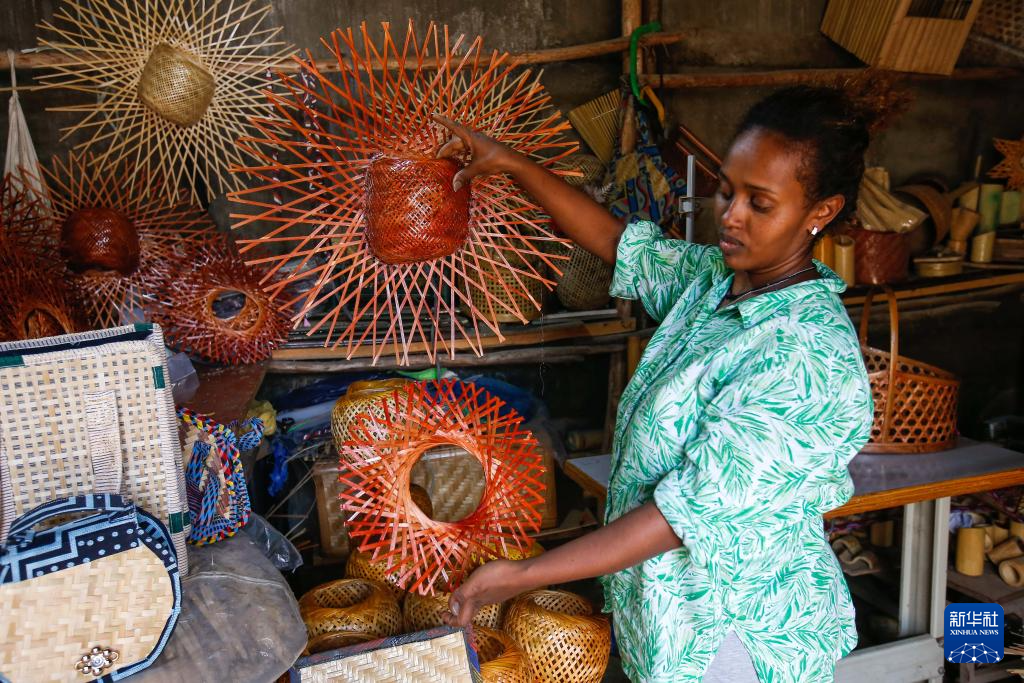 On August 10th, Fikirt Gabre showcased bamboo products at a bamboo and rattan studio called “Green Gold” in Addis Ababa, the capital of Ethiopia. Xinhua News Agency (photo by Michael Twelde)
On August 10th, Fikirt Gabre showcased bamboo products at a bamboo and rattan studio called “Green Gold” in Addis Ababa, the capital of Ethiopia. Xinhua News Agency (photo by Michael Twelde)
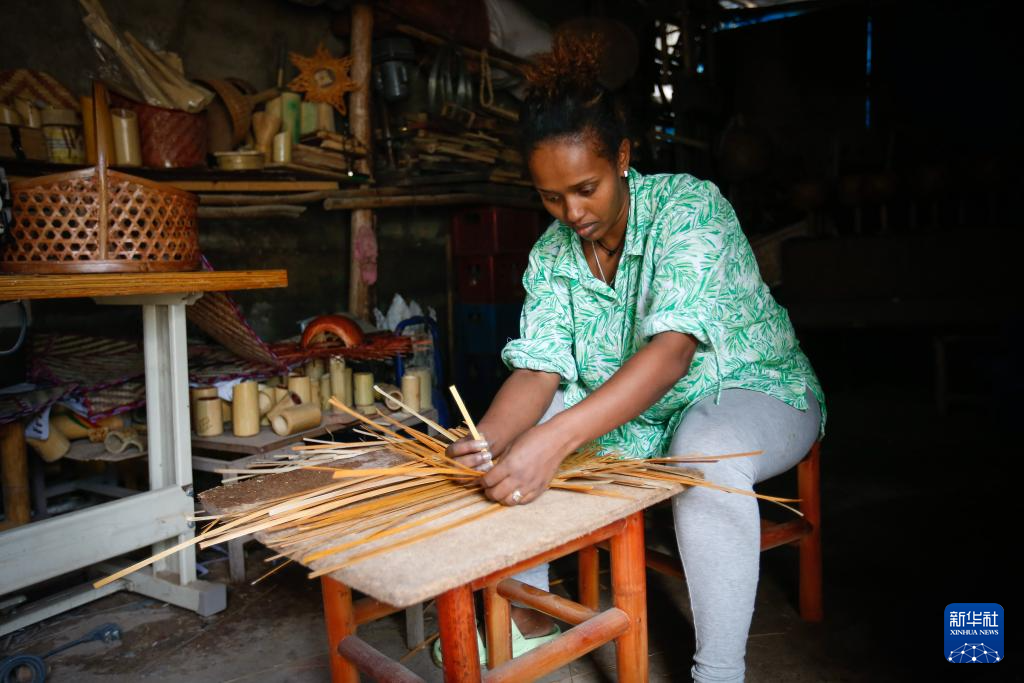 On August 10th, Fikirt Gabre was processing bamboo products at a bamboo and rattan studio called “Green Gold” in Addis Ababa, the capital of Ethiopia. Xinhua News Agency (photo by Michael Twelde)
On August 10th, Fikirt Gabre was processing bamboo products at a bamboo and rattan studio called “Green Gold” in Addis Ababa, the capital of Ethiopia. Xinhua News Agency (photo by Michael Twelde)
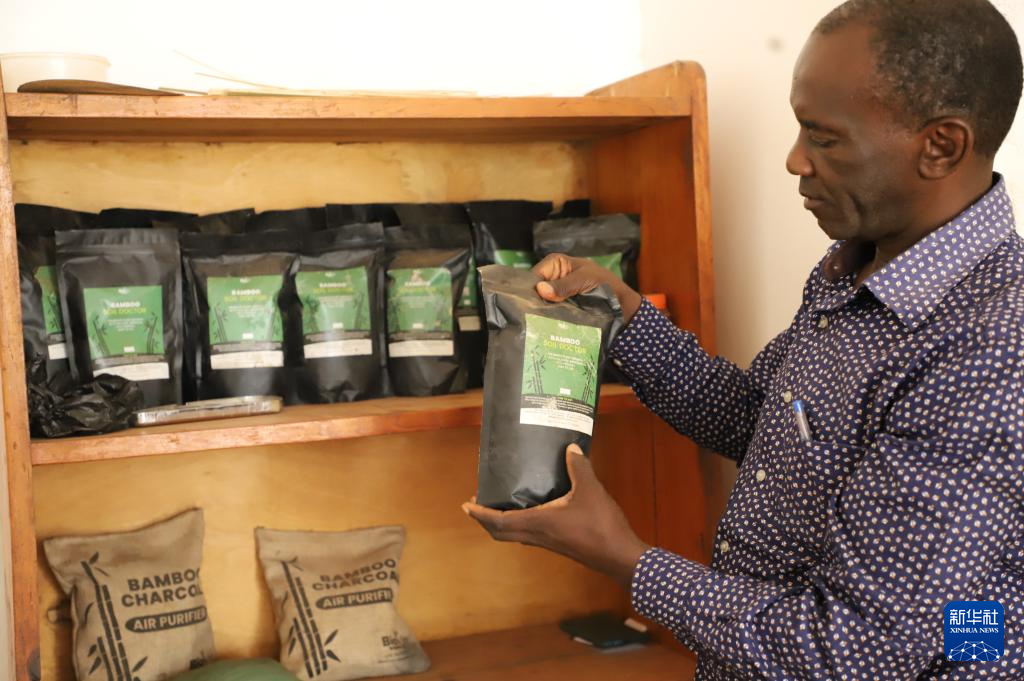 On August 16th, in Kampala, Uganda, a staff member of the Uganda Bamboo Association showcased organic fertilizers made from bamboo. Xinhua News Agency (Photo by Ronald Sekandi)
On August 16th, in Kampala, Uganda, a staff member of the Uganda Bamboo Association showcased organic fertilizers made from bamboo. Xinhua News Agency (Photo by Ronald Sekandi)
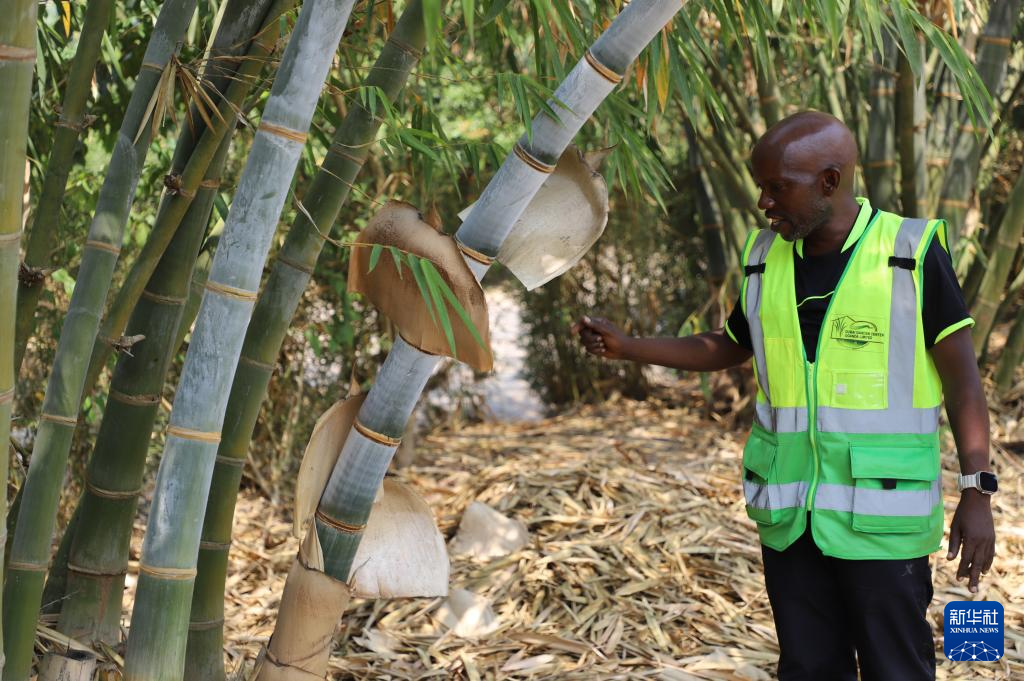 On August 5th, Abi Sitif Tusimi was cooking bamboo at a bamboo plantation in Mbarara City, western Uganda. Xinhua News Agency (Photo by Ronald Sekandi)
On August 5th, Abi Sitif Tusimi was cooking bamboo at a bamboo plantation in Mbarara City, western Uganda. Xinhua News Agency (Photo by Ronald Sekandi)
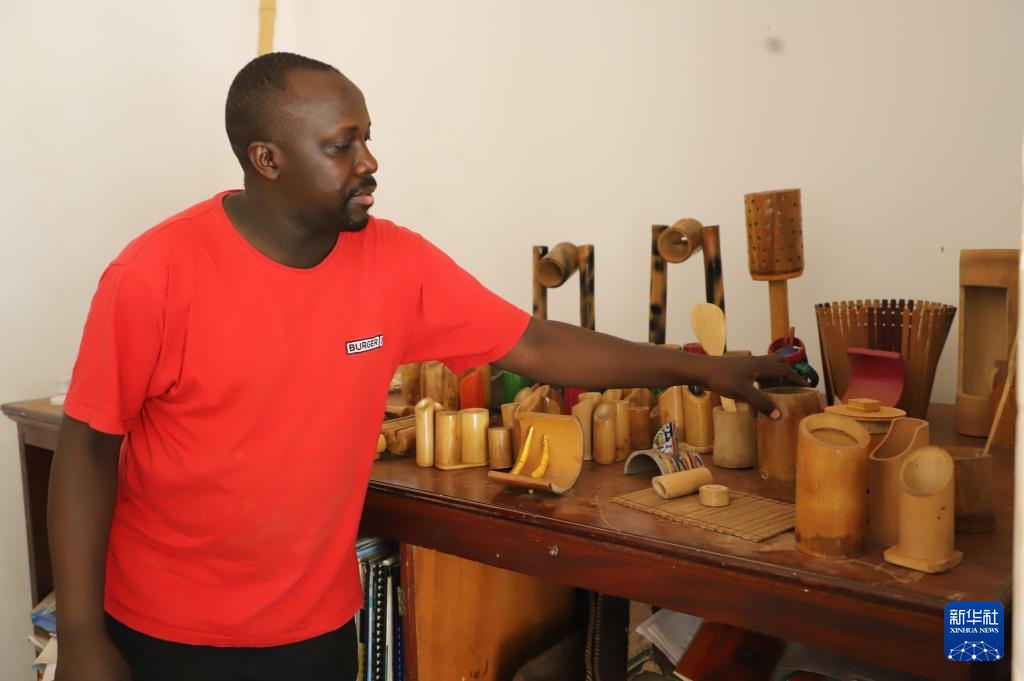 On August 16th, in Kampala, Uganda, a staff member of the Uganda Bamboo Association showcased bamboo products. Xinhua News Agency (Photo by Ronald Sekandi)
On August 16th, in Kampala, Uganda, a staff member of the Uganda Bamboo Association showcased bamboo products. Xinhua News Agency (Photo by Ronald Sekandi)
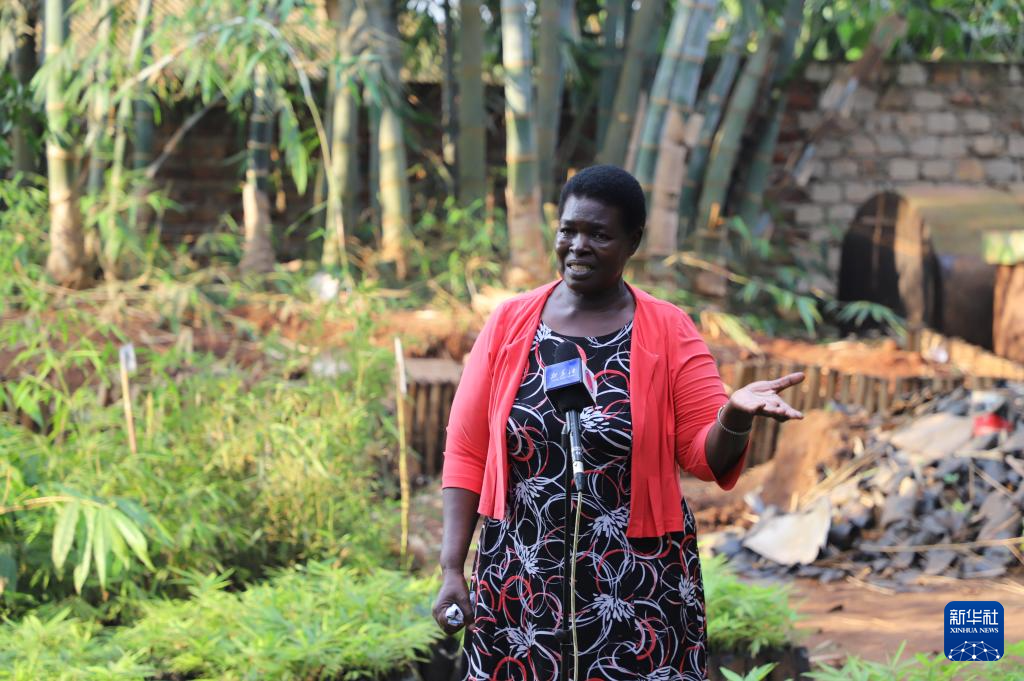 On August 16th, Flavia Munaba, President of the Uganda Bamboo Association, was interviewed by reporters in Kampala. Xinhua News Agency (Photo by Ronald Sekandi)
On August 16th, Flavia Munaba, President of the Uganda Bamboo Association, was interviewed by reporters in Kampala. Xinhua News Agency (Photo by Ronald Sekandi)
